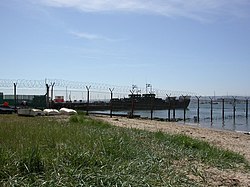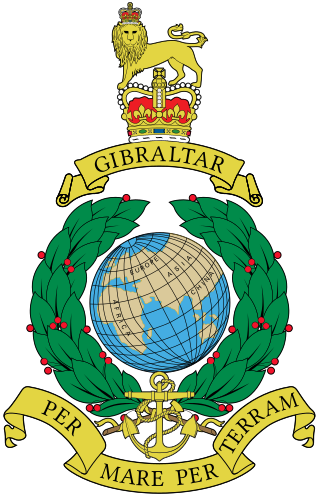
The Royal Marines, also known as the Royal Marines Commandos, and officially as the Corps of Royal Marines, are the United Kingdom's special operations capable commando force, one of the five fighting arms of the Royal Navy, and provide a company strength unit to the Special Forces Support Group (SFSG). The Royal Marines trace their origins back to the formation of the "Duke of York and Albany's maritime regiment of Foot" on 28 October 1664, and the first Royal Marines Commando unit was formed at Deal in Kent on 14 February 1942 and designated 'The Royal Marine Commando'.

The Special Boat Service (SBS) is the special forces unit of the United Kingdom's Royal Navy. The SBS can trace its origins back to the Second World War when the Army Special Boat Section was formed in 1940. After the Second World War, the Royal Navy formed special forces with several name changes—Special Boat Company was adopted in 1951 and re-designated as the Special Boat Squadron in 1974—until on 28 July 1987 when the unit was renamed as the Special Boat Service after assuming responsibility for maritime counter-terrorism. Most of the operations conducted by the SBS are highly classified, and are rarely commented on by the British government or the Ministry of Defence, owing to their sensitive nature.

45 Commando Royal Marines is a battalion sized unit of the British Royal Marines and subordinate unit within 3 Commando Brigade Royal Marines, the principal Commando formation, under the Operational Command of the Fleet Commander.

The United States Naval Special Warfare Command (USNSWC), also known as, is the naval component of United States Special Operations Command, the unified command responsible for overseeing and conducting the nation's special operations and missions.

Joint Expeditionary Base–Little Creek (JEB–LC), formerly known as Naval Amphibious Base Little Creek and commonly called simply Little Creek, is the major operating base for the Amphibious Forces in the United States Navy's Atlantic Fleet. The base comprises four locations in three states, including almost 12,000 acres (4,900 ha) of real estate. Its Little Creek location in Virginia Beach, Virginia, totals 2,120 acres (860 ha) of land. Outlying facilities include 350 acres (140 ha) located just north of Training Support Center Hampton Roads in Virginia Beach and 21 acres (8.5 ha) known as Radio Island at Morehead City, North Carolina, used for U.S. Coast Guard ships and personnel as well as serves as an amphibious embarkation/debarkation area for U.S. Marine Corps units at Marine Corps Base Camp Lejeune, North Carolina. It is also home to the Naval School of Music.
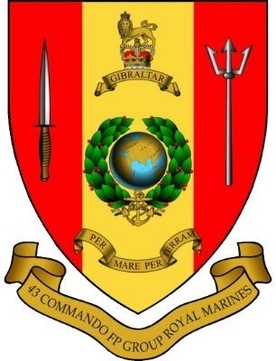
The 43 Commando Fleet Protection Group Royal Marines, formerly Comacchio Company Royal Marines (1980–1983), Comacchio Group Royal Marines (1983–2001) and Fleet Protection Group Royal Marines (2001–2012), is a 550-man unit of the Royal Marines responsible for guarding the United Kingdom's nuclear weapons. The unit, based at HM Naval Base Clyde, is part of 3 Commando Brigade.

His Majesty's Naval Service is the United Kingdom's naval warfare and maritime service. It consists of the Royal Navy, Royal Marines, Royal Fleet Auxiliary, Royal Naval Reserve, Royal Marines Reserve and Naval Careers Service. The Naval Service as a whole falls under the command of the Navy Board, which is headed by the First Sea Lord. This position is currently held by Admiral Sir Ben Key. The Defence Council delegates administration of the Naval Service to the Admiralty Board, chaired by the Secretary of State for Defence.
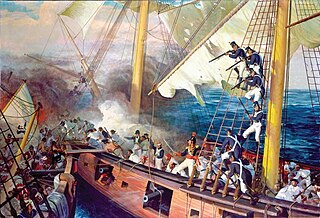
Marines, or naval infantry, are typically a military force trained to operate in littoral zones in support of naval operations. Historically, tasks undertaken by marines have included helping maintain discipline and order aboard the ship, the boarding of vessels during combat or capture of prize ships, and providing manpower for raiding ashore in support of the naval objectives. In most countries, the marines are an integral part of that state's navy.
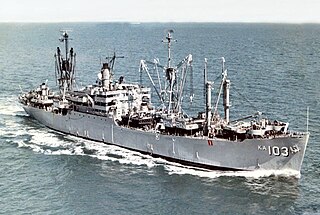
USS Rankin (AKA-103/LKA-103) was a Tolland-class attack cargo ship in service with the United States Navy from 1945 to 1947 and again from 1952 to 1971. She was finally sunk as an artificial reef in 1988.
148 (Meiktila) Commando Forward Observation Battery is a specialist Naval Gunfire Support Forward Observation (NGSFO) unit within 29 Commando Regiment Royal Artillery of 3 Commando Brigade Royal Marines.

47 Commando Royal Marines, formerly 1 Assault Group Royal Marines, is a unit of Royal Marine Commandos that specialise in amphibious assault and raiding, as well as small boat operations, both amphibious and riverine. The unit falls under 3 Commando Brigade. In addition, it trains personnel for the Assault Squadrons of the Royal Marines (ASRM) and their landing craft detachments. It is based at RM Tamar in HMNB Devonport, Plymouth.
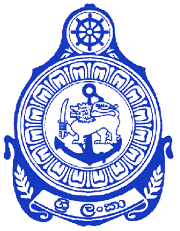
The Sri Lanka Navy (SLN) is the naval arm of the Sri Lanka Armed Forces and is classed as the country's most vital defence force due to its island geography and is responsible for the maritime defence of the Sri Lankan nation and its interests. The role of the Sri Lanka Navy is to conduct operations at sea for the defence of the nation and its interests and conduct prompt and sustainable combat operations at sea in accordance with the national policies.

The Nigerian Navy (NN) is a branch of the Nigerian Armed Forces. It is among the largest navies on the African continent, consisting of 25,000 personnel as at 2021. Its motto is "Onward Together".
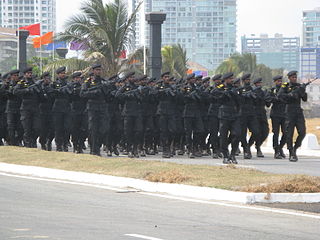
The Special Boat Squadron is the Sri Lanka Navy's elite special forces unit, modeled after the British Special Boat Service. It was raised in 1993.
The history of the Royal Marines began on 28 October 1664 with the formation of the Duke of York and Albany's Maritime Regiment of Foot soon becoming known as the Admiral's Regiment. During the War of the Spanish Succession the most historic achievement of the Marines was the capture of the mole during the assault on Gibraltar in 1704. On 5 April 1755, His Majesty's Marine Forces, fifty Companies in three Divisions, headquartered at Portsmouth, Chatham and Plymouth, were formed by Order of Council under Admiralty control.
The Fleet Landing Exercises, or FLEX were amphibious landing exercises conducted by the United States Navy and United States Marine Corps between 1935 and 1941. The purpose of these exercises was to formulate a workable amphibious warfare doctrine. The development of the necessary craft and other equipment, and the proper tactical deployment of them were also results. Finally, the exercises demonstrated the usefulness of a standing body of Marines, the Fleet Marine Force, specially prepared for amphibious expeditions.

Royal Marines Tamar or more commonly RM Tamar, is a Royal Marines military installation specialising in landing craft training and operations located on the northern bank of Weston Mill Lake at the north end of HMNB Devonport at Plymouth in Devon.
In 1989 the Royal Navy was under the direction of the Navy Department in the UK Ministry of Defence. It had two main commands, CINCFLEET and Naval Home Command.

Sri Lanka Marine Corps was formed in 2016 under the assistance of the 11th Marine Expeditionary Unit of the United States Marine Corps in November 2016 and received further training from the Commando Regiment of Sri Lanka Army.
